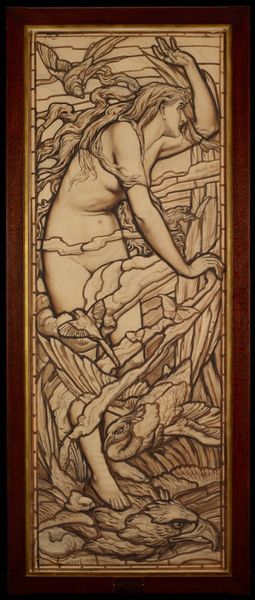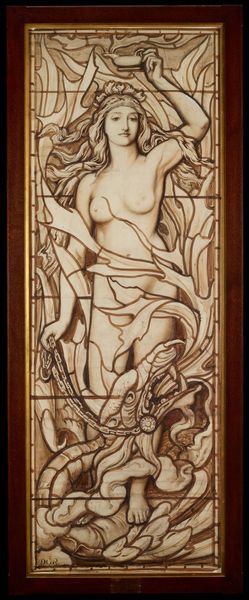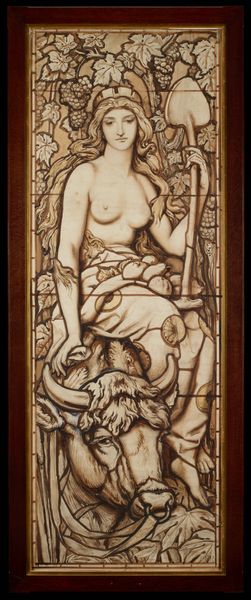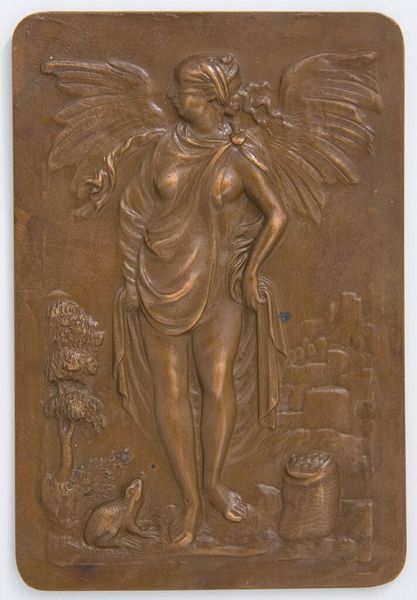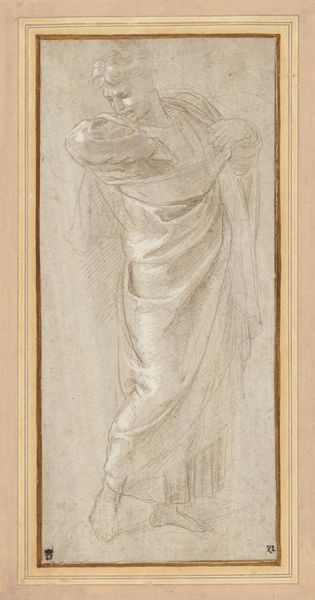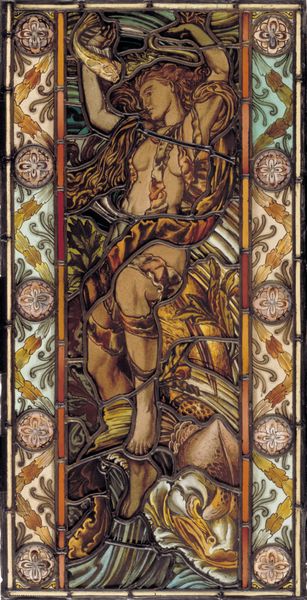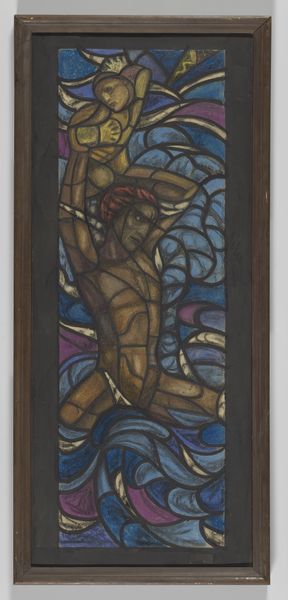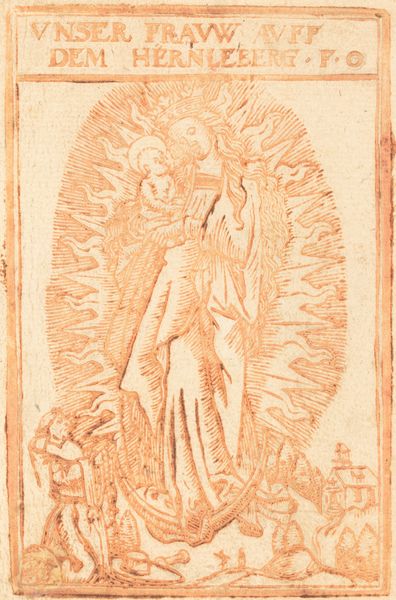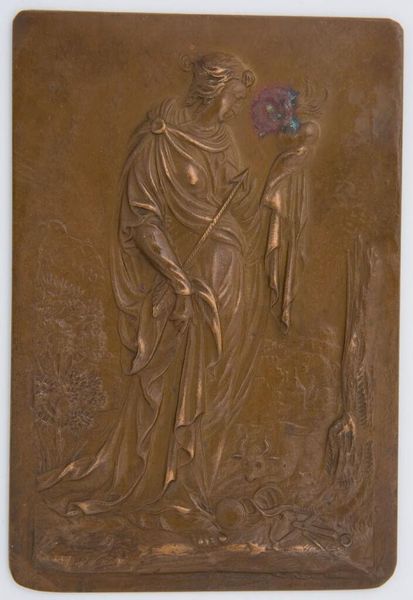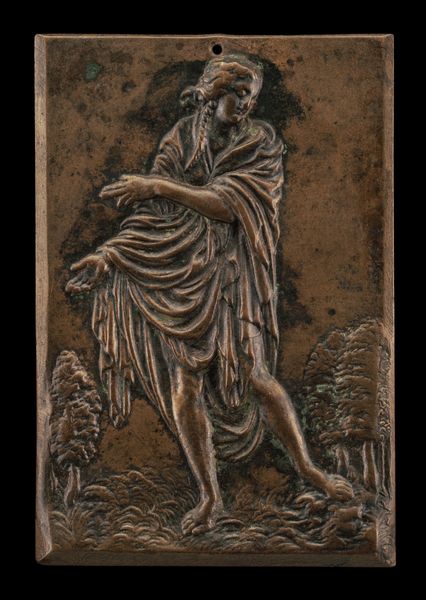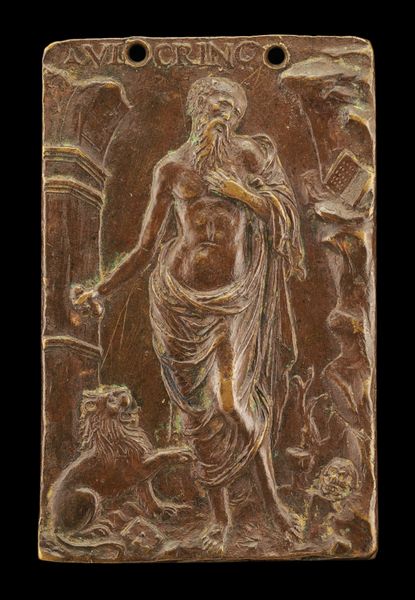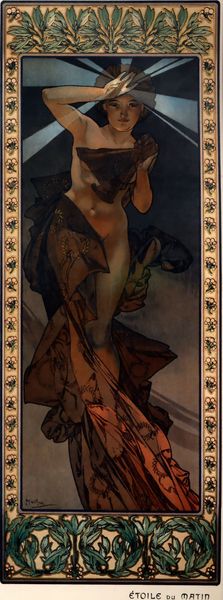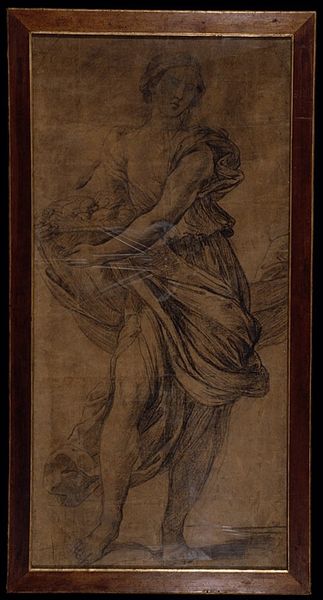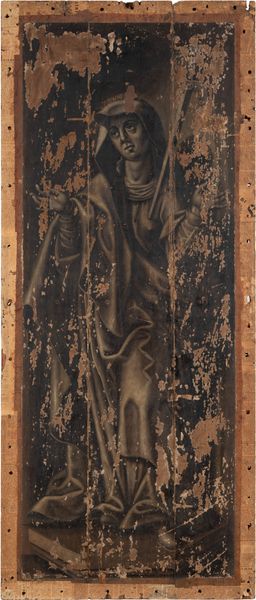
drawing, ink
#
drawing
#
art-nouveau
#
ink painting
#
fantasy-art
#
figuration
#
ink
#
nude
#
watercolor
Dimensions: 68 1/2 x 24 3/4 in. (173.99 x 62.87 cm)
Copyright: Public Domain
Curator: Looking at Frederick G. Smith's drawing titled "Water", created around 1888 or 1889, it's quite striking, isn't it? Done with ink, the piece resides here at the Minneapolis Institute of Art. What are your first thoughts on it? Editor: A sinuous beauty, captured in muted tones. She’s surrounded by aquatic life—a large shell, perhaps a dolphin’s back? It all suggests transformation, a fluidity of identity... almost as though we've interrupted a scene from a myth. Curator: The Art Nouveau influence is rather evident here. The figure’s pose, her flowing hair, the overall decorative quality...it pulls from a broader cultural fascination with the natural world at the end of the 19th century, with a certain… decadence in how it stylizes the female form. It's interesting how the medium itself—ink—lends to that sense of elegant line work. Editor: Indeed. Water nymphs and other related figures often served as emblems of potent feminine life force, especially as societies were shifting and redefining norms, right? But there's a captivating tension, or at least duality here, as her posture appears more dreamlike and yielding. The woman merges with her watery environment; look, she is neither dominant over it, nor overpowered. Curator: Right. Her near-nudity also suggests a breaking away from societal expectations. During this time, debates around women's roles and their representation were common. Smith contributes to this conversation by depicting her almost allegorically – as a force of nature. But even so, the setting still positions her within the familiar confines of a decorative aesthetic appreciated at the time. The museum as a political and cultural gatekeeper still shaped even progressive messages in a very direct manner. Editor: Symbols resonate across different times. The visual vocabulary employed here feels familiar. That entwined hair? Look how it echoes currents in water! The image offers a continuous rebirth. Even now. Curator: It’s a useful example of how aesthetic movements can intersect with complex social and political undercurrents. A work that offers endless angles of exploration. Editor: I agree, what I initially sensed about metamorphosis now carries richer, contextual weight because of your insight.
Comments
minneapolisinstituteofart almost 2 years ago
⋮
The attribution of this impressive stained glass design, along with its three companion drawings in Mia's collection (10.1-10.3), has been a century-old puzzle. The large-scale cartoons, representing the four elements, were acquired in 1910 as the work of the famous British Pre-Raphaelite painter Dante Gabriel Rossetti (1828-1882). This attribution was based on the spurious monogram "D.G.R" inscribed at the lower edge of each of the drawings. Over the years, other artists' names have been proposed--Frederic James Shields (1833-1911), Henry Holiday (1839-1927)--but no consensus among experts was found. In December 2015, exactly 105 years after the drawings were given to the museum, the identity of the artist has been recovered. They are the work of the British artist Frederick G. Smith. It was Peter Cormack, the noted scholar of British and American stained glass, who tracked down Smith and also identified the project for which they were produced, the grand staircase at Avery Hill, in southeast London. Smith was a partner of the London firm Campbell, Smith, & Co., and he likely executed these cartoons between 1888 or 1889, when the house was being reconstructed by Colonel John T. North. The stained glass was completed by 1890, but Avery Hill was badly damaged during the Blitz of World War II. In 1982 the museum acquired a stained glass panel directly related to the series, representing the allegory of Water (81.92). The provenance is not known, but the glass is roughly half the size of the drawing. It may have come from Avery Hill, or perhaps Campbell, Smith & Co. executed multiple versions of Smith's designs.
Join the conversation
Join millions of artists and users on Artera today and experience the ultimate creative platform.
